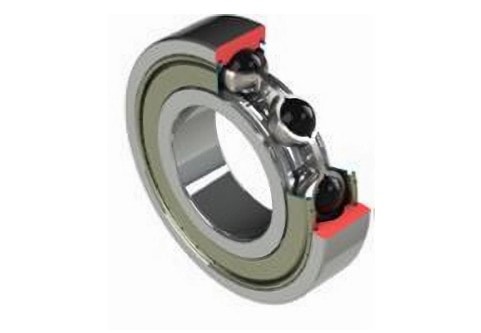The Volution Bearing PDFs
Wiki Article
Some Of Volution Bearing
Table of ContentsAll about Volution BearingAll About Volution BearingVolution Bearing Fundamentals ExplainedSome Known Factual Statements About Volution Bearing
The temperature levels revealed are those of the bearing elements themselves, which are generally greater than the ambient temperature of the application. For temperature level elements in between the values revealed, linear interpolation might be applied - https://www.anyflip.com/homepage/sxfmu. Imbalance of a bearing typically takes place for 2 reasons: Housings are statically misaligned Shaft disperses or flexes under tons Typically, misalignment is not an advantage for rolling aspect bearings that are not particularly developed to suit imbalanceMisalignment greater than this will certainly cause L10 lives less than that calculated. Round roller bearings and self-aligning thrust bearings are specifically made to fit misalignment. Self-aligning round roller bearings can likewise fit some imbalance these bearings. This kind of bearing is found in the "Custom" bearings area. These special bearing types can fit misalignments from 1.0 to 1.5.
Area elevations and capabilities boost appropriately. Section height is merely the radial measurement between a bearing's birthed and its outside diameter, into which must be fitted an inner race, rounds or rollers, and an outer race. A properly created bearing balances the densities of both races with the rolling aspect size in order to enhance Dynamic Ability without considerably lowering the structural stamina of the races.
Our Volution Bearing Statements
As a whole, for a bearing to appropriately run, the internal and external races have to be effectively supported by the shaft and housing. The nature of the layout of some kinds of tools does not constantly permit this. As discussed in the imbalance section, in some cases considerable shaft deflection can happen triggering misalignment.All of these impacts tend to lower the academic life of the bearing, but with correct analysis and special inner style, this reduction can be lessened. Most bearing systems employ 2 or 3 bearings in order to sustain a shaft under radial and drive tons. The number of bearings depends on whether one bearing is also capable of taking a thrust tons.
When there is a significant range between two support bearings, differences in thermal growth in between the shaft and the housing require that bearing be the locating or propelled bearing and the other be a "float" bearing. Additionally, a stack-up of axial resistances between the 2 bearing areas needs to have one birthing "float" axially so that a parasitical thrust tons is not created.
Everything about Volution Bearing
Axial float is quickly suited by the lubed rollers sliding on the straight roller course. If another sort of bearing is used, such as a deep groove round bearing, double row angular get in touch with bearing, TDO tapered roller bearing or round roller bearing, the common technique is to enable the external races of these bearings to slide in the housing birthed.
The world of engineering and equipment completely relies on numerous technical products, yet bearings hold a special location in all. They are tiny components that play a crucial duty in enabling smooth regulated activity, reducing friction, and ensuring efficient energy transfer. And also, not all the bearings are equivalent, they are distributed according to shape and dimension.

Ball bearings are designed in such a method, that it enables effective lots circulation and smooth turning. The activity of machinery components is benefited by ball bearings.
3 Easy Facts About Volution Bearing Shown
Various kinds of bearings serve different applications. Some of the usual variations are ball bearings, drive sphere bearings, angular contact round bearings, and deep groove sphere bearings.They are specialized rolling component bearings created to deal with both radial and great post to read axial lots, as they have their outer and inner rings tapered. Additionally referred to as sleeve bearings or bushings, they are bearings that operate the principle of sliding activity more than rolling elements. They are a kind of rolling bearing created to provide reliable support for radial lots that allow rotational activity.

Report this wiki page